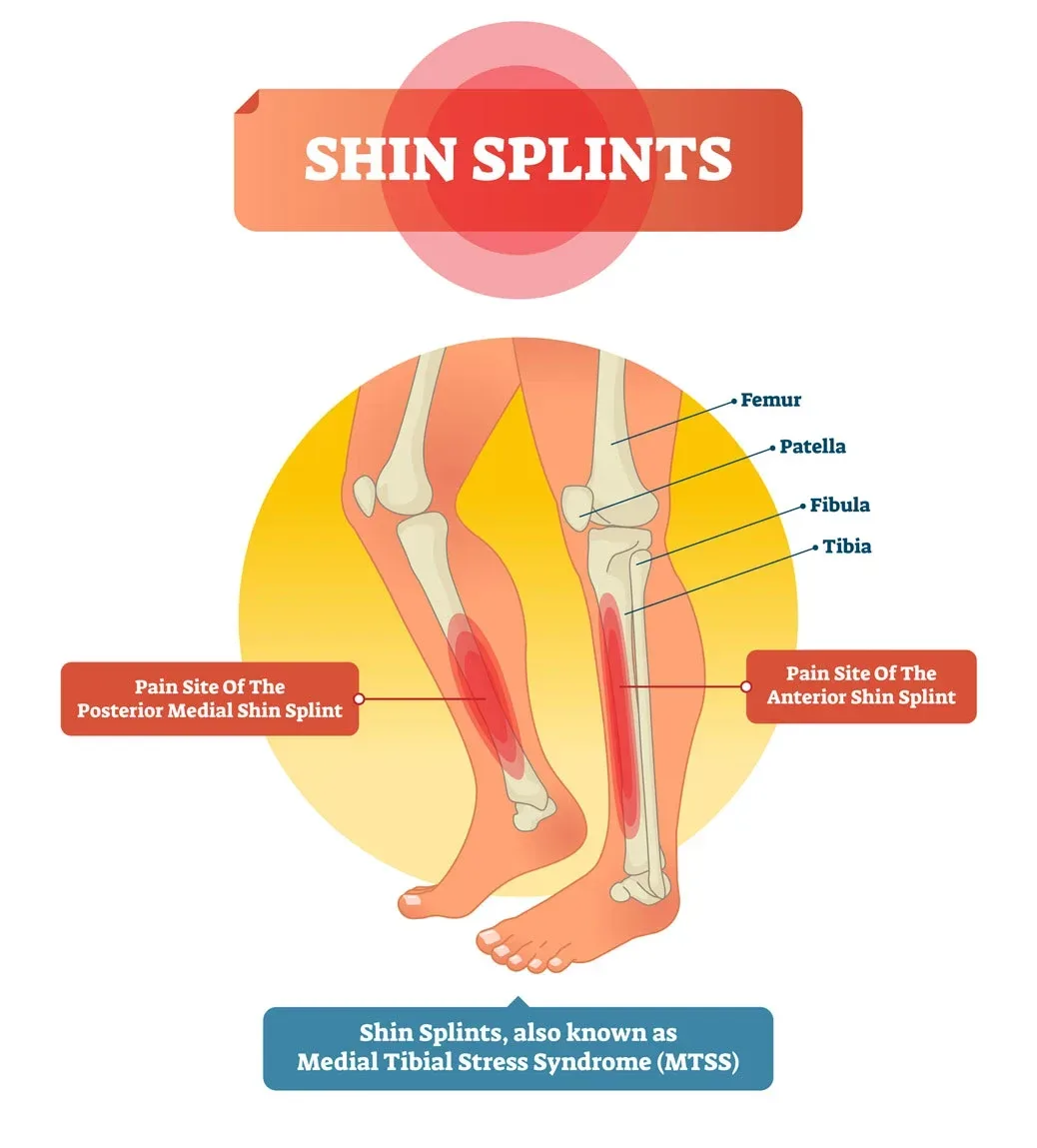Shin splints, also known as medial tibial stress syndrome (MTSS), are a common injury that affects runners, dancers, and other athletes who engage in high-impact activities. The condition is characterised by pain along the inner edge of the shinbone (tibia), usually caused by repetitive stress on the lower leg’s bone, muscles, and connective tissues.
Symptoms of Shin Splints
The primary symptom of shin splints is pain along the inner edge of the shinbone, which may be felt during or after physical activity. Other symptoms may include:
- Tenderness or soreness along the inner side of the lower leg
- Swelling in the lower leg
- Numbness or weakness in the feet
- Pain that worsens with activity and improves with rest
Causes of Shin Splints
Shin splints are typically caused by overuse or excessive stress on the bones, muscles, and connective tissues in the lower leg. Some common factors that may contribute to the development of shin splints include:
- Sudden increase in the intensity or duration of physical activity
- Running on hard or uneven surfaces
- Wearing worn-out or inappropriate footwear
- Having flat feet or high arches
- Tight calf muscles or weakness in the hip and core muscles
Treatment for Shin Splints
Treating shin splints typically involves rest, ice, and stretching exercises to reduce pain and inflammation. Some specific treatment options may include:
- Taking a break from high-impact activities to allow the shin to heal
- Applying ice to the affected area for 15-20 minutes at a time, several times a day
- Performing stretching exercises for the calf muscles and Achilles tendon
- Using over-the-counter pain relievers, such as ibuprofen or acetaminophen, to reduce pain and inflammation
- Wearing proper footwear with good arch support and cushioning
- Using orthotics or insoles to correct foot abnormalities or provide additional support
Depending on the cause of the shin splints, extracorporeal shockwave therapy or physical therapy may be recommended. Your chiropractor or physiotherapist will advise if this is the case.
Prevention of Shin Splints
To help prevent shin splints, athletes should:
- Gradually increase the intensity and duration of their workouts
- Wear appropriate footwear with good arch support and cushioning
- Run on softer surfaces, such as grass or a track, instead of hard surfaces like concrete
- Incorporate cross-training activities, such as swimming or cycling, to reduce stress on the shins
- Perform regular stretching and strengthening exercises for the lower leg muscles
By taking these precautions and seeking prompt treatment when necessary, athletes can reduce their risk of developing shin splints and maintain optimal performance in their chosen activities.
